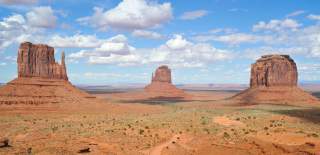The answer is… plenty!
From the mighty Red deer, to brightly-coloured hawfinches, to foxes slinking across the heathland, the winter months provide some of the best opportunities to watch our wonderful wildlife.
Why?
Without the leaves on the trees you can see further through the ancient woodland – perhaps spotting a red or green woodpecker shinning up a tree trunk.
 If it’s frosty or we have snow, then all our deer species – from the Reds to the Fallow, Roe, Sika and Muntjac will show up better against the pale background. And you can also have fun tracking their hoof-prints, along with those of foxes and badgers, which are also easier to spot in the frost or snow.
If it’s frosty or we have snow, then all our deer species – from the Reds to the Fallow, Roe, Sika and Muntjac will show up better against the pale background. And you can also have fun tracking their hoof-prints, along with those of foxes and badgers, which are also easier to spot in the frost or snow.
Another good reason to visit us now is that dawn is much later and dusk much earlier – so your chances of seeing or hearing our winter wildlife is much greater. These two times of day are the best to spot foxes and badgers setting off on their nocturnal adventures or coming home – seek out their distinctive dens and setts on the side of earth banks.
 Fewer visitors mean shyer creatures are more likely to venture out and in the quiet of dawn or dusk you’ll be able to hear the shriek of a fox or the rustle of a badger more clearly.
Fewer visitors mean shyer creatures are more likely to venture out and in the quiet of dawn or dusk you’ll be able to hear the shriek of a fox or the rustle of a badger more clearly.
Try, too, to see how many birds you can spot, which is not only interesting in itself but can actually improve your mental health, according to a study conducted by Exeter University. Their research, published in 2017, showed that the more birds, trees and shrubs a person saw, the greater their mental well-being.
Now is a great time to spot birds because their colours show up against the greys and browns of the New Forest’s winter landscape.
 From the humble blackbirds (you’ll catch them on the ground throwing up fallen leaves as they look for food), to robins singing from lower branches, to blue and peach coloured nuthatches (they rove up and down tree trunks) to redwings and fieldfares munching on hawthorn berries in hedges, you’ll have plenty to look out for.
From the humble blackbirds (you’ll catch them on the ground throwing up fallen leaves as they look for food), to robins singing from lower branches, to blue and peach coloured nuthatches (they rove up and down tree trunks) to redwings and fieldfares munching on hawthorn berries in hedges, you’ll have plenty to look out for.
Winter is a good time to try and spot one of the rare celebs of the avian world – the Dartford warbler, of which the New Forest is a stronghold. Look out for a bird with a dark, blue-grey back and a rust-coloured underneath, perching on a gorse bush. Dartford warblers have been seen at Blackgutter Bottom, Ashley Walk and the area around Beaulieu Road Station.
Migratory birds love the New Forest, too! To see some of the waders and water birds that choose to over-winter here, get along to Keyhaven Marshes or to Blashford Lakes.
Waxwings – beautiful pink and grey birds with a distinctive crest - come here for winter and in January you may be lucky to hear the Great-spotted woodpeckers starting up their courtship displays – listen out for the distinctive hammering noise.
 If you can, walk or wander at dusk when you might spot one of nature’s greatest sights - a murmuration of starlings, dancing and creating fantastic shapes in the sky. Or listen out for the hoots and ‘kee-wick’ sounds made by our Tawny owls. Look out, too, for Barn owls, easily spotted by their drifting, ghostly flights.
If you can, walk or wander at dusk when you might spot one of nature’s greatest sights - a murmuration of starlings, dancing and creating fantastic shapes in the sky. Or listen out for the hoots and ‘kee-wick’ sounds made by our Tawny owls. Look out, too, for Barn owls, easily spotted by their drifting, ghostly flights.
Add to this the squirrels, rabbits, hares and the occasional otter in the rivers and you’ll be set for a feast of wildlife.
And, because we are the New Forest, you are almost guaranteed to see one of our 5,000 or so roaming ponies, you may also see some donkeys, and cattle, too. They are not wild but neither are they tame, so always make sure you observe them from a respectful distance, never block their path and never, ever feed them – no matter how appealing they look!
*Find our best wildlife walks here.

